Catalog
Search
728 products
View:
- Selected: 1Applying
- Selected: 0Names
- Selected: 0Manufacturer
- Selected: 0Made in
- Selected: 0Additional
View:
728 products
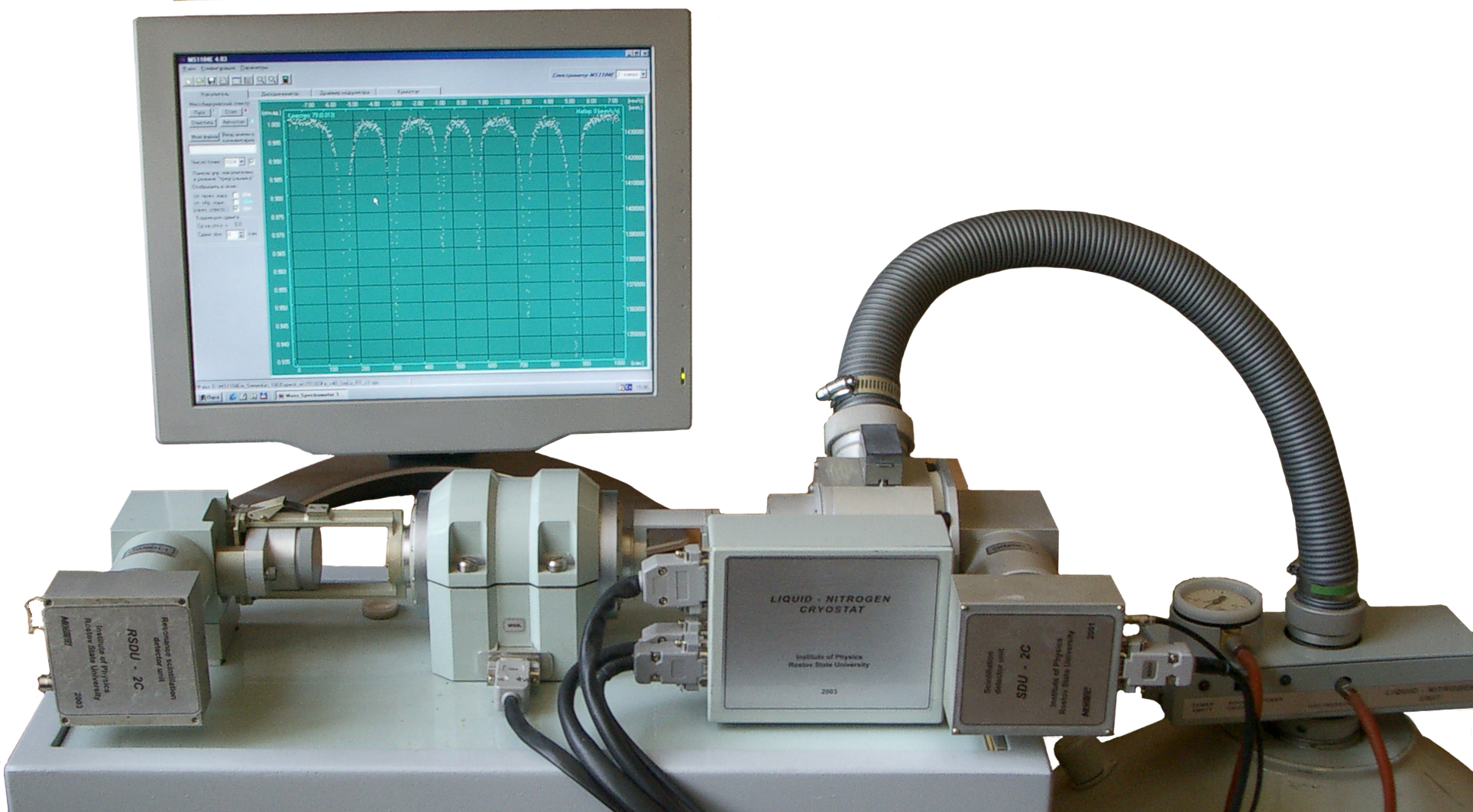
Express Mössbauer spectrometer MS1104Em
The MS-1104E spectrometer is characterized by high performance and accuracy of Mössbauer measurements achieved through the use of “compressed” geometry, as well as the use of highly efficient and selective resonant scintillation detection units that improve the energy resolution of resonance absorption lines by up to 30%. The technique of software and hardware stabilization of the spectrometric path developed and used in the spectrometer allows for long-term Mossbauer measurements without manual adjustment. The method of modulation in the specified speed intervals can significantly increase the sensitivity and expressiveness of measurements and reduce the time to determine the magnitude of the effects of resonant absorption by tens of times in the study of temperature phase transitions with a low concentration of resonant elements.
The electronic components of the spectrometer are developed on the basis of a modern element base using programmable logic matrices and microprocessors. Adjustable spectrometric paths and high-voltage power supplies of the PMU are integrated into detection units, modulator driver modules and multi-channel storage are made in the ISA standard and are located in the processor unit of the computer. Setting and monitoring of all parameters of the spectrometer and processing of the measured spectra is carried out from the operating windows of the control and processing programs.
Since 2000, more than ten spectrometers of this type have been supplied to leading scientific organizations in Russia and neighboring countries. One of the few industrial applications of Mössbauer spectroscopy should be noted - the development and supply to the Volgodonsk NPP of certified MS-1104Em methods and spectrometer for monitoring corrosion processes in the heat exchange circuits of the VVER-1000 reactor.
Отдел аналитического приборостроения ЮФУ
Ростов-на-Дону
Produced in: Rostov-on-Don
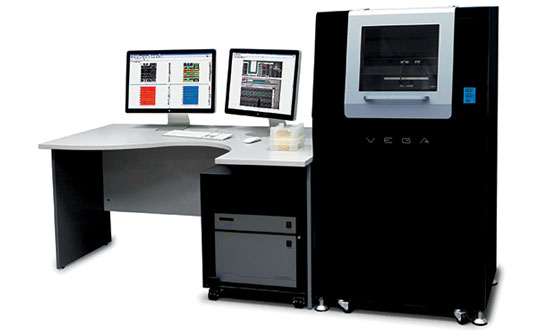
VEGA
The ultimate display quality is ensured by the use of built-in acoustic and vibration isolation, thermal stabilization, the industry's best sensitivity of the optical recording system and the unique design of the scanning probe system, which allows achieving atomic resolution in routine measurements.
In the basic configuration, 50+ AFM techniques are available, including the HybriD method, which allows conducting all cutting-edge nanomechanical, electrical and magnetic studies.
Intelligent ScanTronic™ algorithm for one-click optimization of scanning parameters, which allows for perfect relief measurements using the amplitude-modulation method, regardless of the operator's experience.
Automated examination of multiple samples using a simple user interface to create a point-by-point scanning scenario and a database for stored received images.
Control of samples with dimensions up to 200×200 mm and thickness up to 40 mm at any point of the surface with a positioning accuracy of 1 micron.
Wide customization possibilities: installation of additional optical equipment, development of specialized sample holders, combination with a transport system, automation of measurements and data analysis in accordance with customer requirements.
NT-MDT Spectrum Instruments
Zelenograd
Produced in: Moscow, Zelenograd
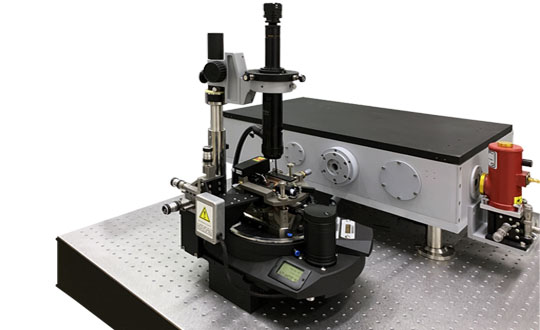
NTEGRA NANO IR
NT-MDT Spectrum Instruments is an INTEGRA Nano IR–scattering scanning near‑field optical microscope (s-NSOM) designed for the infrared spectral range.
The AFM probe is located in the focus of an optical system that directs the IR laser radiation to the sample and collects the optical response. The collected radiation is sent to the Michelson interferometer for optical analysis.
The far-field component of the collected signal is suppressed by synchronous detection. The INTEGRA Nano IR system allows detecting the amplitude and phase of the near-field signal. The spatial resolution of the resulting reflection and absorption contrasts is approximately 10 nm and is determined only by the size of the tip of the probe.
NT-MDT Spectrum Instruments
Zelenograd
Produced in: Moscow, Zelenograd
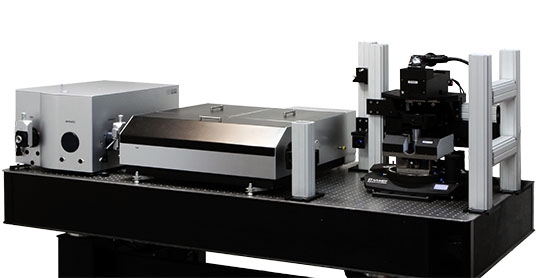
NTEGRA Spectra II
NTEGRA Spectra II is already a second-generation measuring system that successfully demonstrates the unification of two worlds: AFM and Raman spectroscopy.
It can perform multiple functions ranging from relief mapping to 2D spectral analysis, from studies of electrical and mechanical properties to optical measurements with a resolution below the diffraction limit.
Now scientists can conduct a complete physico-chemical analysis of the surface properties of the sample at a time.
As a result, researchers get unlimited opportunities to develop their laboratory techniques.
NT-MDT Spectrum Instruments
Zelenograd
Produced in: Moscow, Zelenograd
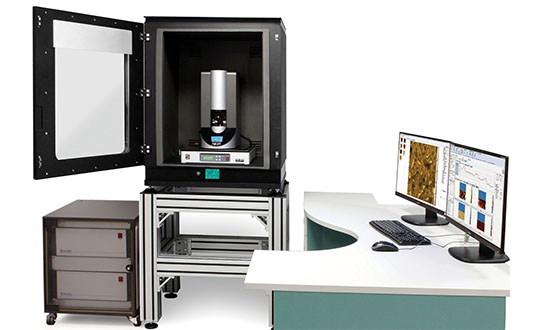
NEXT II
14 high-precision stepper motors control all moving parts of the microscope, and intelligent software blurs the line between optical and SPM imaging. NEXT provides continuous magnification from millimeter-scale panoramic optical images to atomic resolution, and intermediate operations such as laser pointing to the cantilever, sample positioning, soft approach and configuration of advanced SPM techniques occur automatically.
NT-MDT Spectrum Instruments
Zelenograd
Produced in: Moscow, Zelenograd
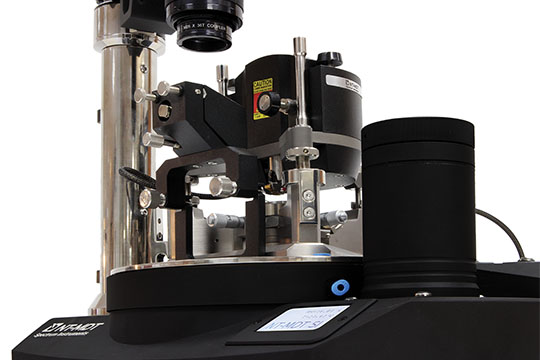
NTEGRA II
NT-MDT S.I. presents NTEGRA II, the second generation of the world's most popular AFM.
Thanks to additional features and advanced functions, it provides an unprecedented level of modularity and flexibility, becoming a true partner of the researcher. Intelligent, fast, reliable, accurate and undoubtedly easy to use.
To eliminate the influence of a noisy environment, the NTEGRA II is supplied in a standard cabinet that provides temperature control, acoustic and vibration isolation.
This combination reveals the true nature of NTEGRA II as the most stable AFM in the world, providing a temperature drift of less than 0.2 nm/min.
NT-MDT Spectrum Instruments
Zelenograd
Produced in: Moscow, Zelenograd
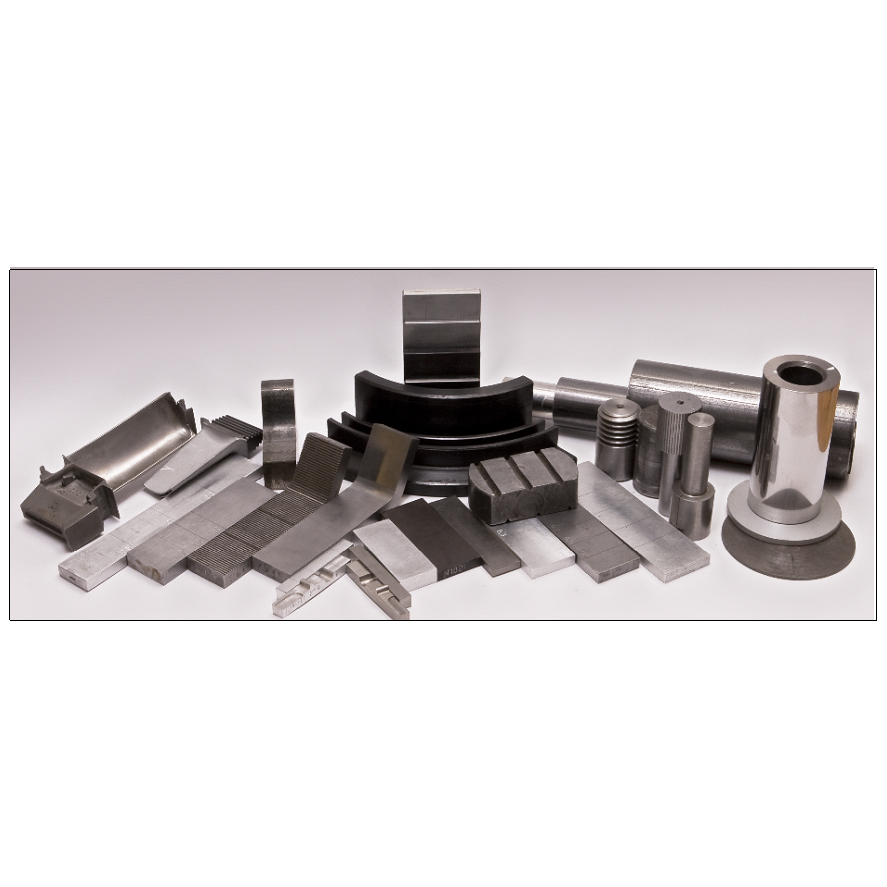
KOIDZ-VD Sets of samples of artificial defects and gaps
from
0 ₽
KOIDZ-VD kits consist of samples of artificial defects (SAD) and samples of gaps (SG). Samples of artificial defects are made in the form of flat and curved plates and cylinders, on the working surfaces of which defects are made in the form of continuity violations like slits of various depths, opening widths and lengths.
The working surfaces of flat SADs are two opposite surfaces on which longitudinal slits are cut by an electroerosion method
The working surfaces of the SAD, reproducing a positive curved surface, are samples with a cylindrical surface.
The working surface of the SAD reproducing negative curvature is the inner surface of the curved plate — the place of inflection.
The KOIDZ-VD kit contains an SAD for determining the influence of various quantities.
To determine the effect of the roughness of the working surfaces, the kit contains SADs with different roughness, on which defects of the same depth are made.
To determine the effect of positive curvature and surface roughness, the kit contains cylindrical samples with different roughness of working surfaces on which defects of the same depth are made.
To determine the simultaneous effect of negative curvature and surface roughness, the kit contains curved plates on which two defects of the same depth are cut, one of which is located on the flat, the other on the curved parts of the sample.
To determine the effect of the chemical composition of the material of the controlled products, the kit contains samples of steel 10, steel 20 and steel 45. The same defects are made on each sample.
To account for the influence of specific electrical conductivity, the kit contains samples from non-magnetic structural materials: aluminum alloy D16T and titanium alloy VT-23. The same defects are made on each sample.
Gap samples are flat and curved plates of different thicknesses made of dielectric material.
Technical specifications
The range of nominal values of the depth of defects, mm: from 0.1 to 10.
The limits of permissible error of the value of the depth of defects, mm: from ± 0.02 to ± 0.25.
The range of nominal values of the width of the opening of defects, mm: from 0.03 to 0.15.
The limits of the permissible error of the width of the opening
of defects, mm: from ± 0.01 to ± 0.05.
The range of nominal values of the length of defects, mm: from 6 to 100.
The limits of permissible error of the value of the length of defects, mm: from ± 0.5 to ± 1.
The range of nominal values of the thickness
of the dielectric gap samples, mm: from 0.2 to 10.
The limits of the permissible error of the thickness of the samples, mm: from ± 0.02 to ± 0.5.
The range of nominal values of the radius of curvature
of curved surfaces with defects, mm:
- convex: from 13 to 510;
- concave: 10.
RII MNPO SPEKTR
Moscow
Produced in: Moscow
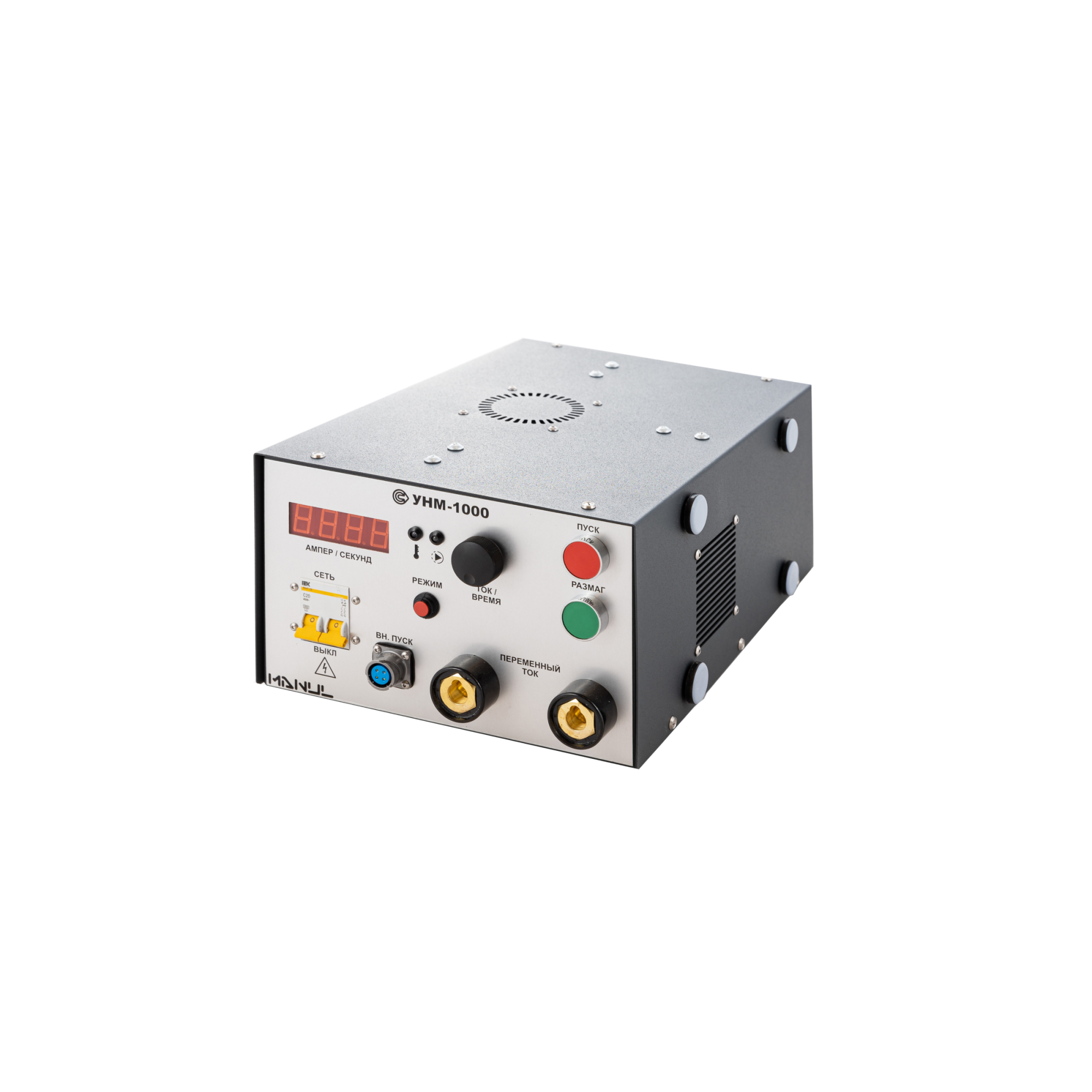
UNM-1000 portable magnetizing device, power unit
from
480 000 ₽
The UNM-1000 allows to detect internal, subsurface and surface defects of different types (cracks, flokens, delaminations, defects of welding seams, etc.) in parts, structural elements, units and mechanisms of industrial units, railway, auto, air vehicles, as well as petrochemical, gas and technological equipment during the manufacturing and repair stages or during routine inspections of the products being in operation.
The principle of operation of the UNM-1000 AC flaw detector
The magnetic powder method of detecting defects in products made of ferromagnetic materials is based on the ability of magnetic powder particles to settle in the defect zone, where inhomogeneities of the magnetic field created by the magnetizing device arise. Unlike devices based on permanent magnets, magnetic particle flaw detectors allow you to set the current and time of magnetization and automatically demagnetize controlled samples.
The UNM-1000 AC flaw detectors allow monitoring of products by the applied field method using various magnetization techniques. To do this, the alternating electric current generated by the flaw detector can be passed through a magnetizing cable or directly through a controlled product connected to the flaw detector using electrical contacts. The value of the current used for magnetization and demagnetization of the product is set by the operator of the device.
Design features and advantages
The UNM-1000 flaw detector is a portable device, which allows you to control the quality of products made of ferromagnetic materials both in production and in laboratory conditions. The basic set of equipment for magnetic particle flaw detection includes a UNM-1000 magnetizing device, a power cable for power supply from a single-phase AC network with a voltage of 220 V, and technical documentation. At the request of the customer, electrical contacts and a magnetizing AC cable can be additionally supplied.
The advantages of the UNM-1000 device of the MANUL series include:
the possibility of monitoring both in the applied magnetic field with longitudinal magnetization using power cables, and with circular magnetization by passing current through the controlled product;
wide range of magnetization current adjustment from 50 to 1000 A;
automatic demagnetization of controlled products;
high performance;
the device is compact and has light weight;
the degree of protection from external influences is at least IP40.
Scope of application of magnetic particle control means
Due to its versatility, simplicity and ease of operation, the UNM-1000 magnetic particle flaw detector can be used in almost all non-destructive testing laboratories of workshops and assembly shops of the automotive and aviation industries, railway transport, for the needs of civil and military shipbuilding. Also, the UNM-1000 magnetic powder control device can be successfully used in the energy sector, in the production of pipelines, metal structures, construction equipment and related industries. Technical characteristics of the portable magnetizing device UNM-1000 fully complies with the requirements of the following standards: GOST R 56512-2015, GOST R 53700-2009 (ISO 9934-3:2002), GOST R 50.05.06-2018, GOST R ISO 10893-5-2016, GOST ISO 17638-2018, RD 34.17.102-88, RD-13-05-2006 , as well as other national and foreign regulations documents on standardization of magnetizing devices and flaw detectors for magnetic powder control.
Technical specifications
• Magnetization current: up to 1000A (RMS), 4.3V,50 Hz
• Demagnetization mode
• Weight: no more than 20kg
• Overall dimensions (W×H×D): 290×160×450 mm
• The device is powered by 220V, 50 Hz
RII MNPO SPEKTR
Moscow
Produced in: Moscow
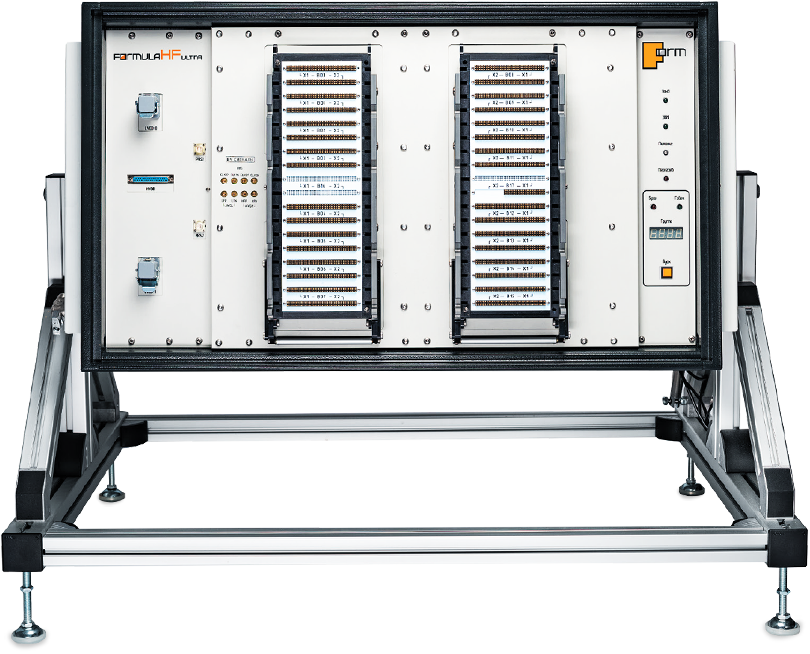
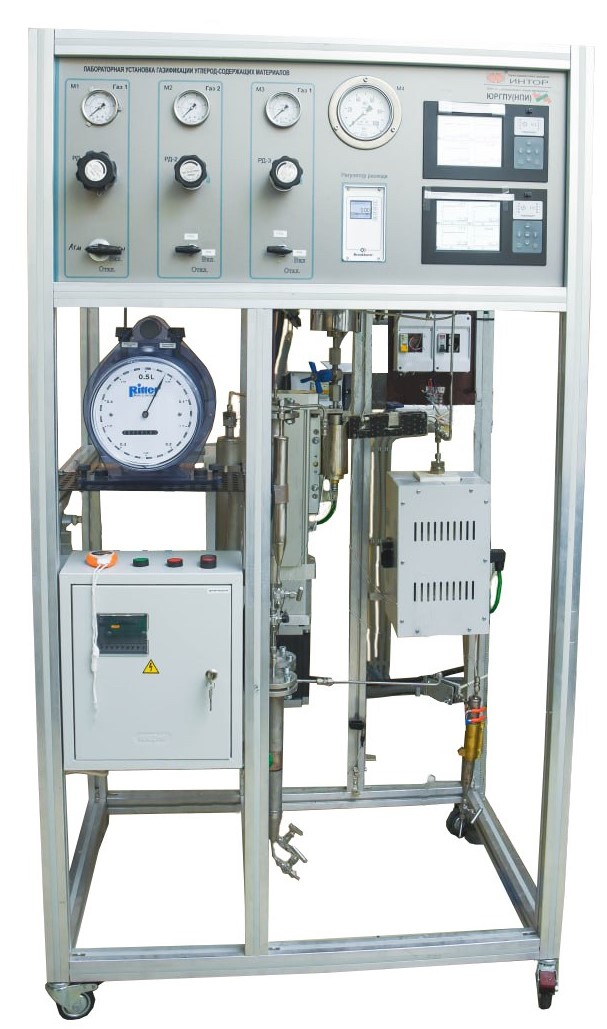
Laboratory hydrocracking/gasification unit
The laboratory unit is designed to study the catalytic and thermal processes of processing heavy petroleum raw materials.
The installation allows you to explore the following processes:
1. Hydrocracking
2. Thermal cracking
3. Gasification of water dispersions of coal, biomass, heavy oil residues.
The high-pressure liquid pump operates at temperatures up to 200°C, which makes it possible to supply high-viscosity components (fuel oil, tar, paraffin, ceresin, etc.) to the reactor.
The laboratory unit is manufactured in accordance with the technical requirements of customers so as to correspond to a wide range of technological parameters. The modular configuration of the unit allows you to change or upgrade it at any time for new tasks.
Main advantages:
1. The possibility of developing and supplying a reactor to meet customer requirements;
2. A wide range of accessories for the supply of liquids/solids;
3. Visual process control;
4. A system of control and regulation of technological parameters;
5. Convenience of loading and unloading of raw materials and reaction products;
6. The possibility of conducting long-term tests in continuous mode;
7. The possibility of upgrading the structure for new purposes;
8. Control and accurate reproduction.
YURGPU(NPI) FGBOU VO "YURGPU(NPI) IMENI M.I.PLATOVA"
Novocherkassk
Produced in: Rostov region, Novocherkassk
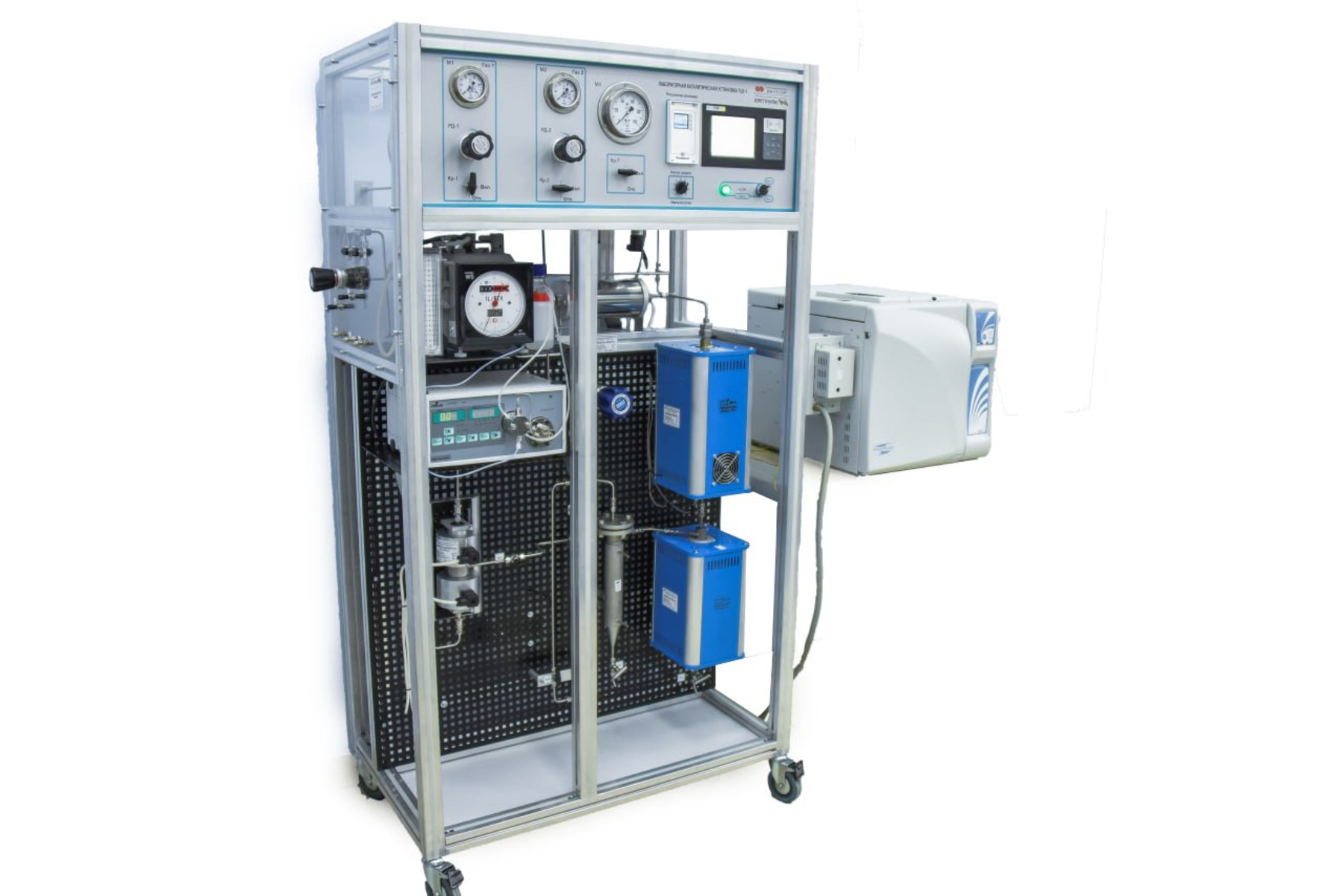
PCU-1 Laboratory catalytic unit
The PCU-1 laboratory catalytic unit is designed to perform the following tasks:
1. Educational and scientific research of chemical processes;
2. Improvement of current industrial processes and development of new ones;
3. Studies of homogeneous and heterogeneous catalysts.
The PCU-1 laboratory catalytic unit is manufactured in accordance with the technical requirements of customers so as to correspond to a wide range of technological parameters. Additionally, embedded equipment is designed to control the flow of raw materials and products, as well as data collection and processing. The unit can be subsequently modernized for new purposes.
Main advantages:
1. A reliable and high-precision system of control and regulation of technological parameters;
2. Easy replacement of catalyst samples;
3. The possibility of conducting long-term tests in continuous mode;
4. The possibility of upgrading the unit for new purposes;
5. The possibility of conducting tests in flow and flow-circulation modes;
6. Control and accurate reproduction.
YURGPU(NPI) FGBOU VO "YURGPU(NPI) IMENI M.I.PLATOVA"
Novocherkassk
Produced in: Rostov region, Novocherkassk
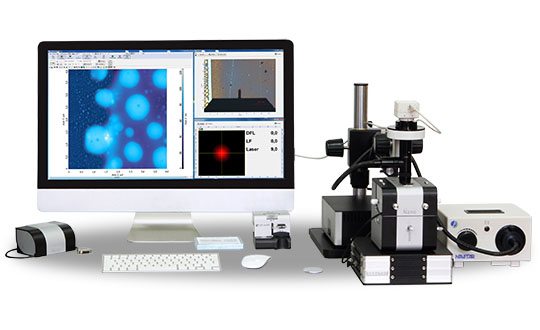
NANOEDUCATOR II
NanoEducator II, despite its compactness and ease of operation, supports all basic techniques of atomic force and scanning tunneling microscopy, so it can be used for any routine AFM and STM measurements and experiments in scientific research. Here are the results of some experiments in various scientific applications:
Study of atomic structures
Study of metallic nanostructures
Study of magnetic structures
Study of polymer objects
Study of biological objects
Study of carbon nanomaterials
NT-MDT Spectrum Instruments
Zelenograd
Produced in: Moscow, Zelenograd
